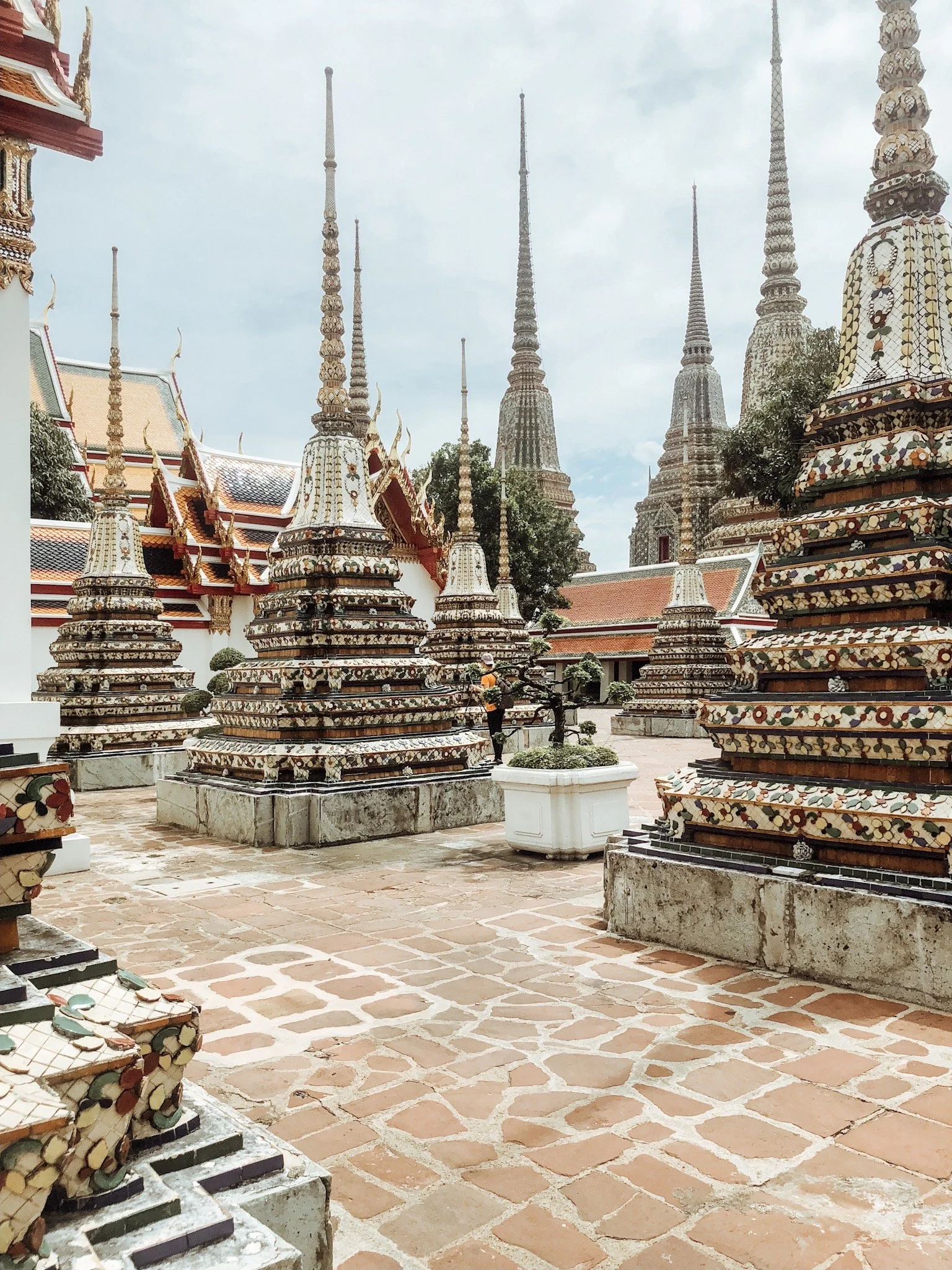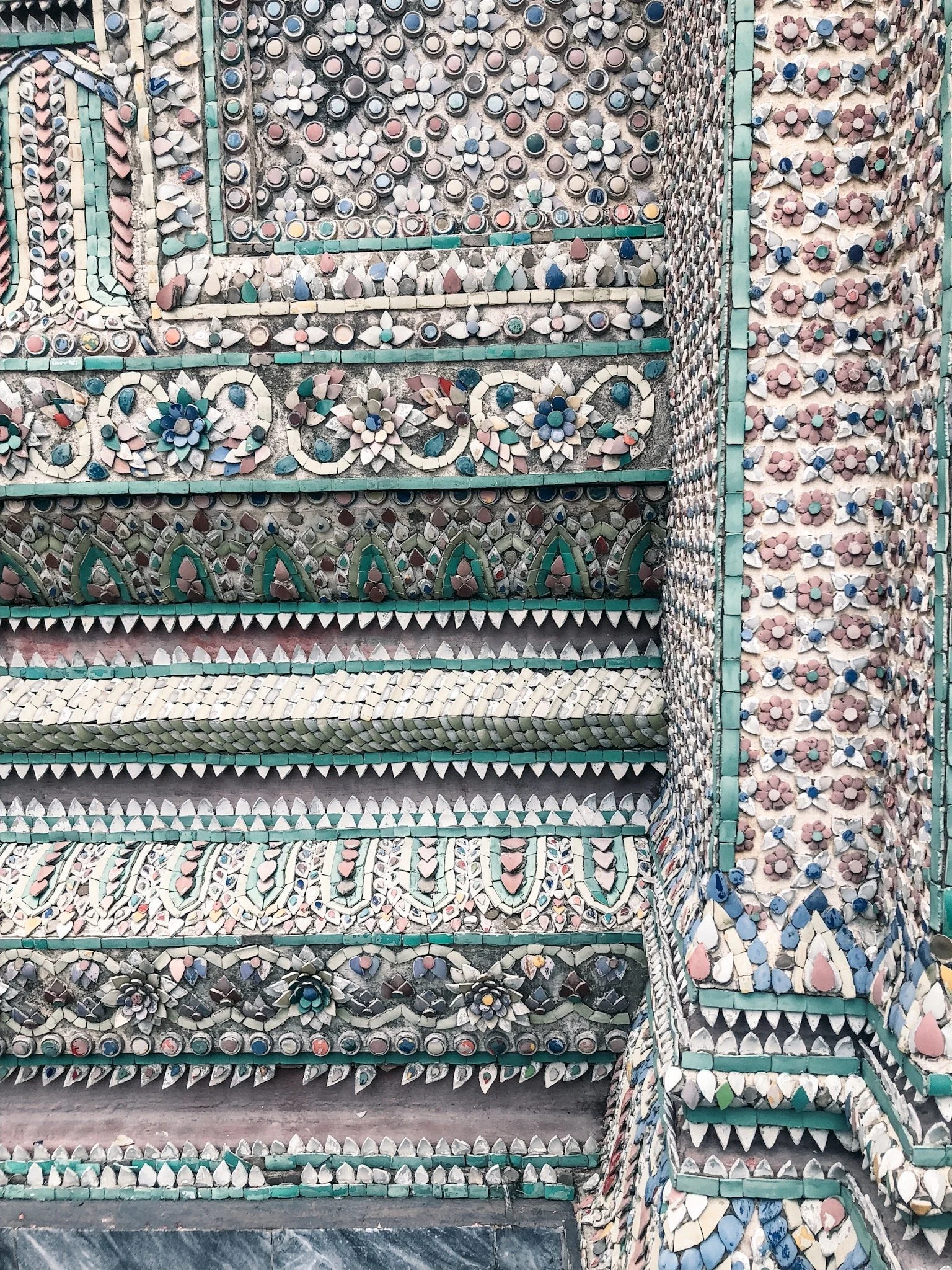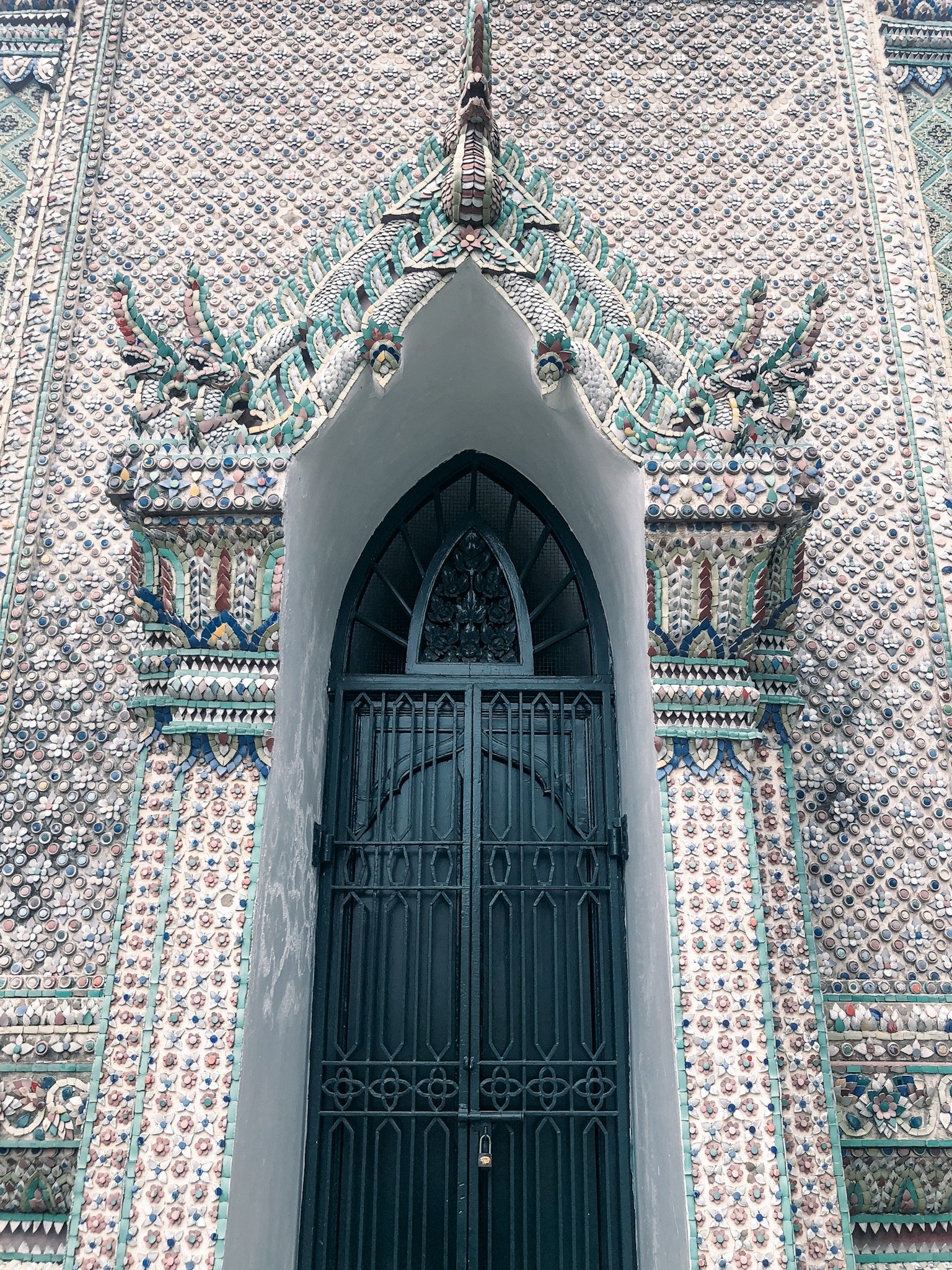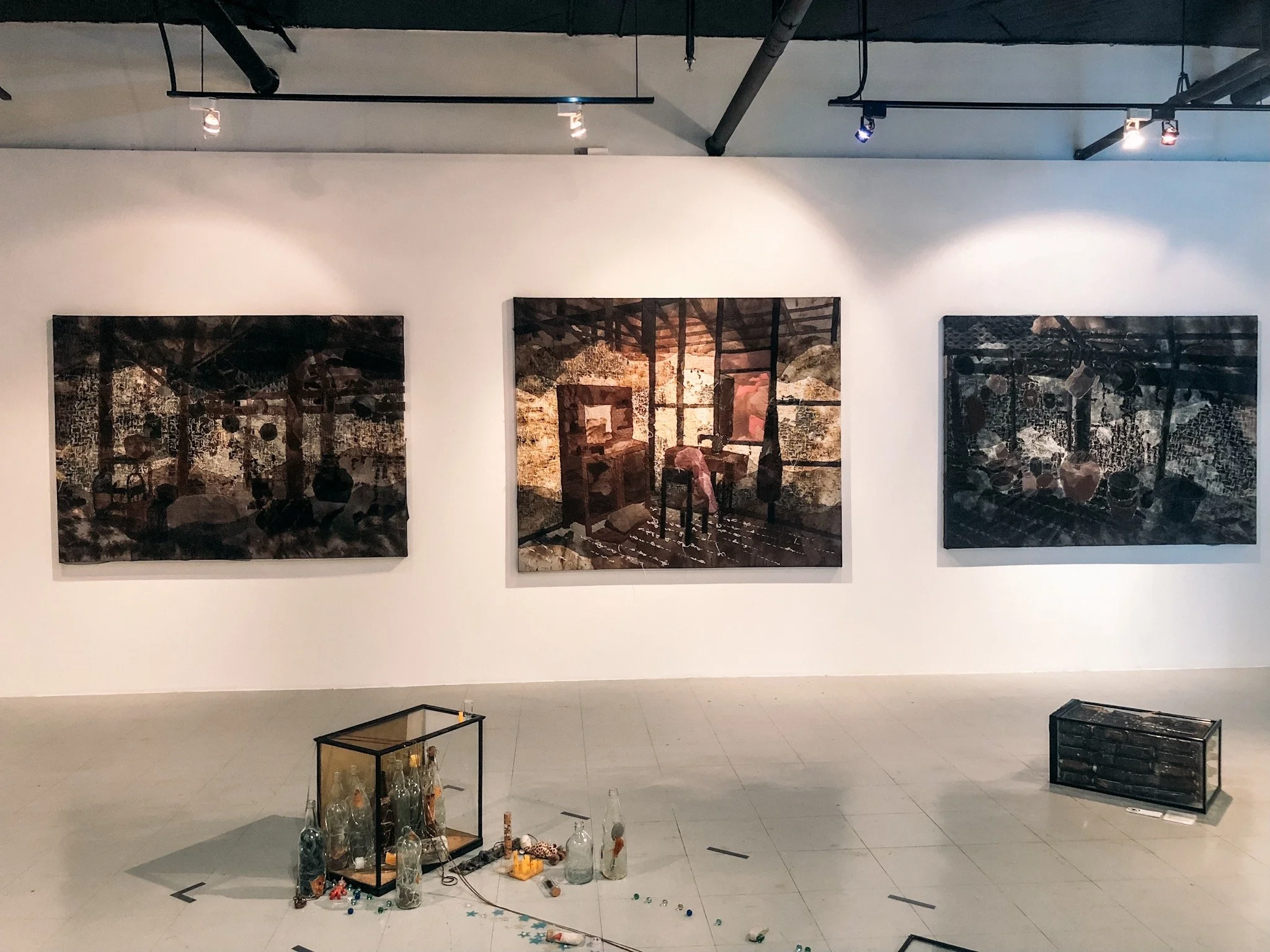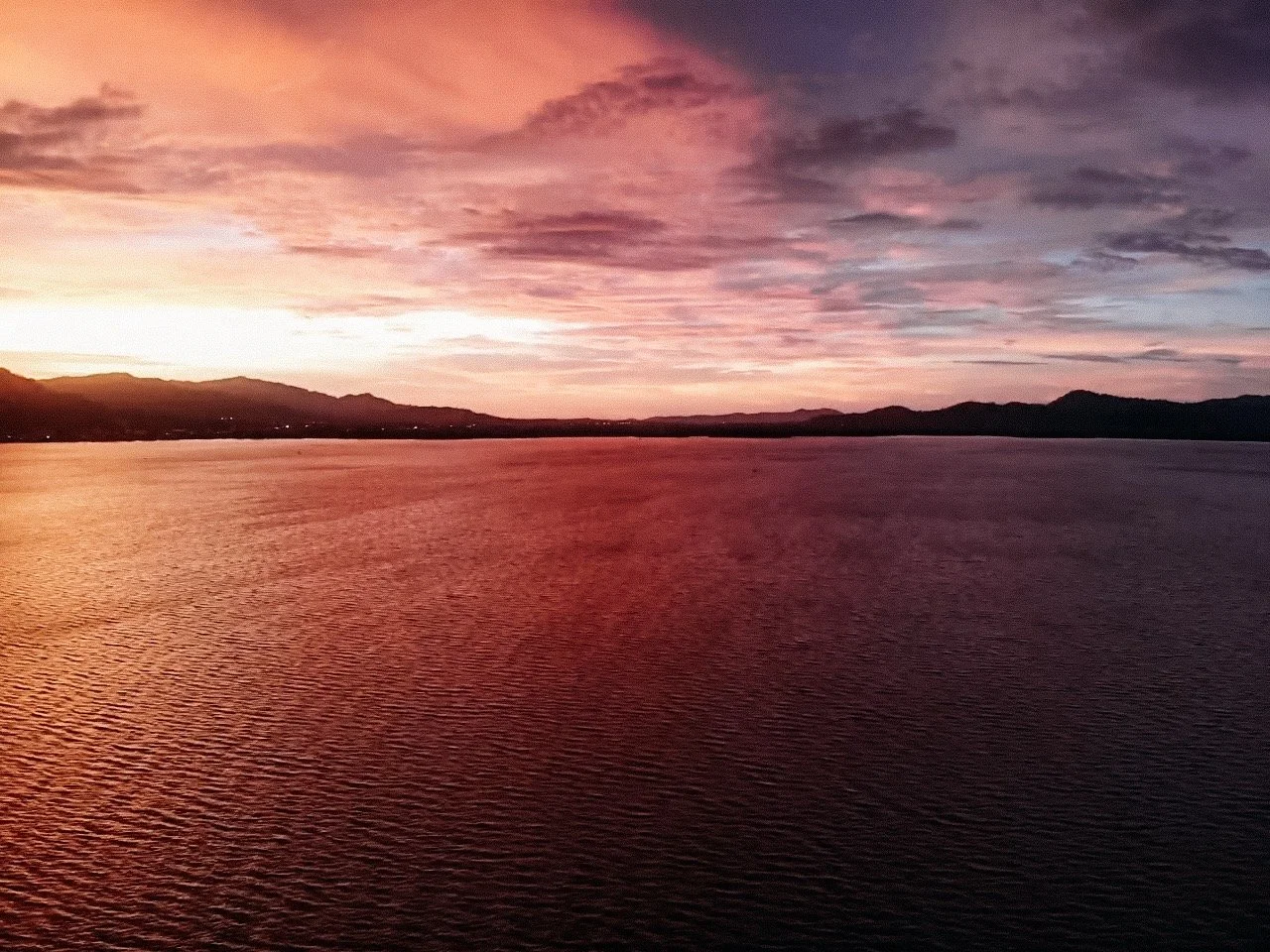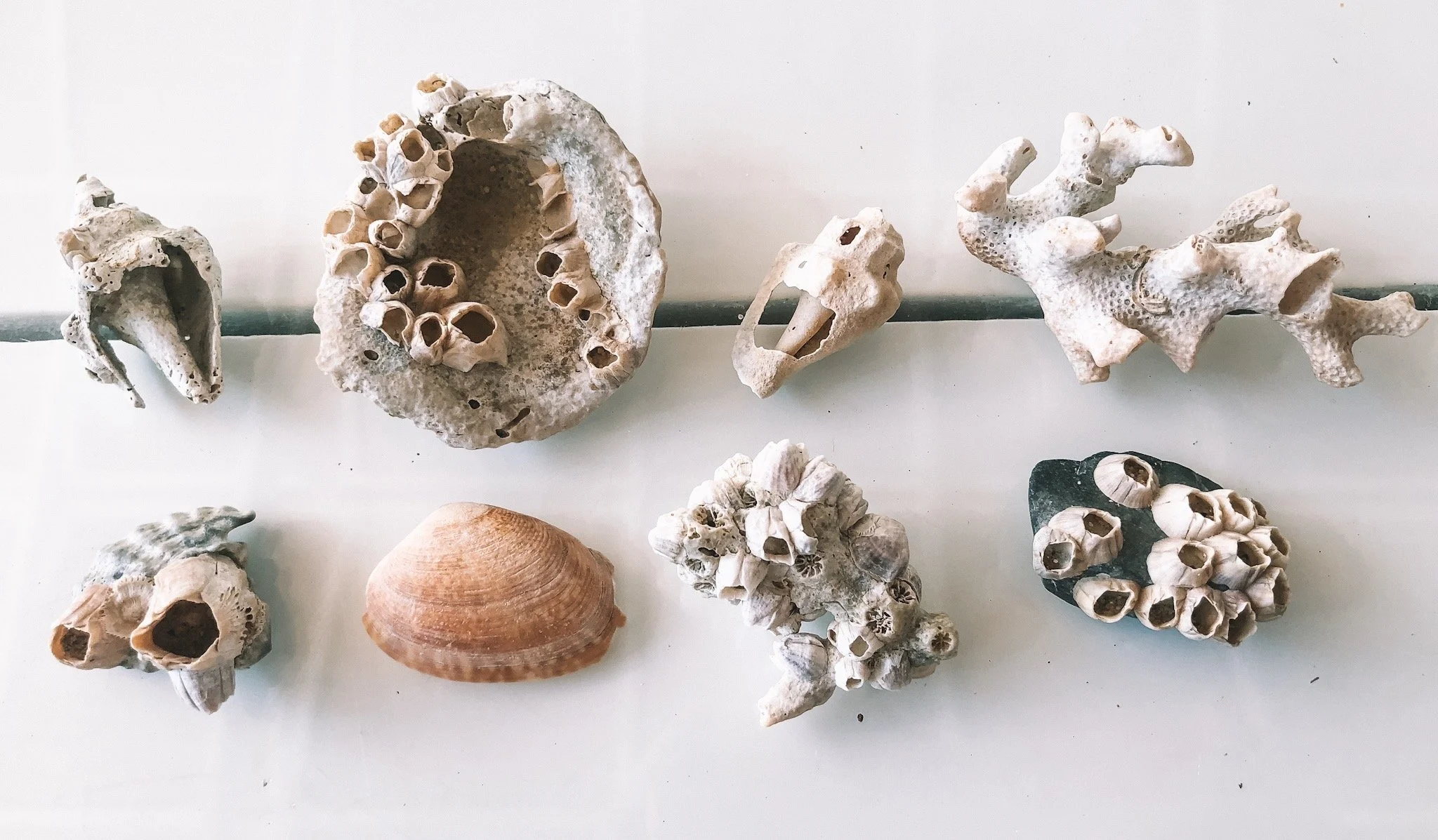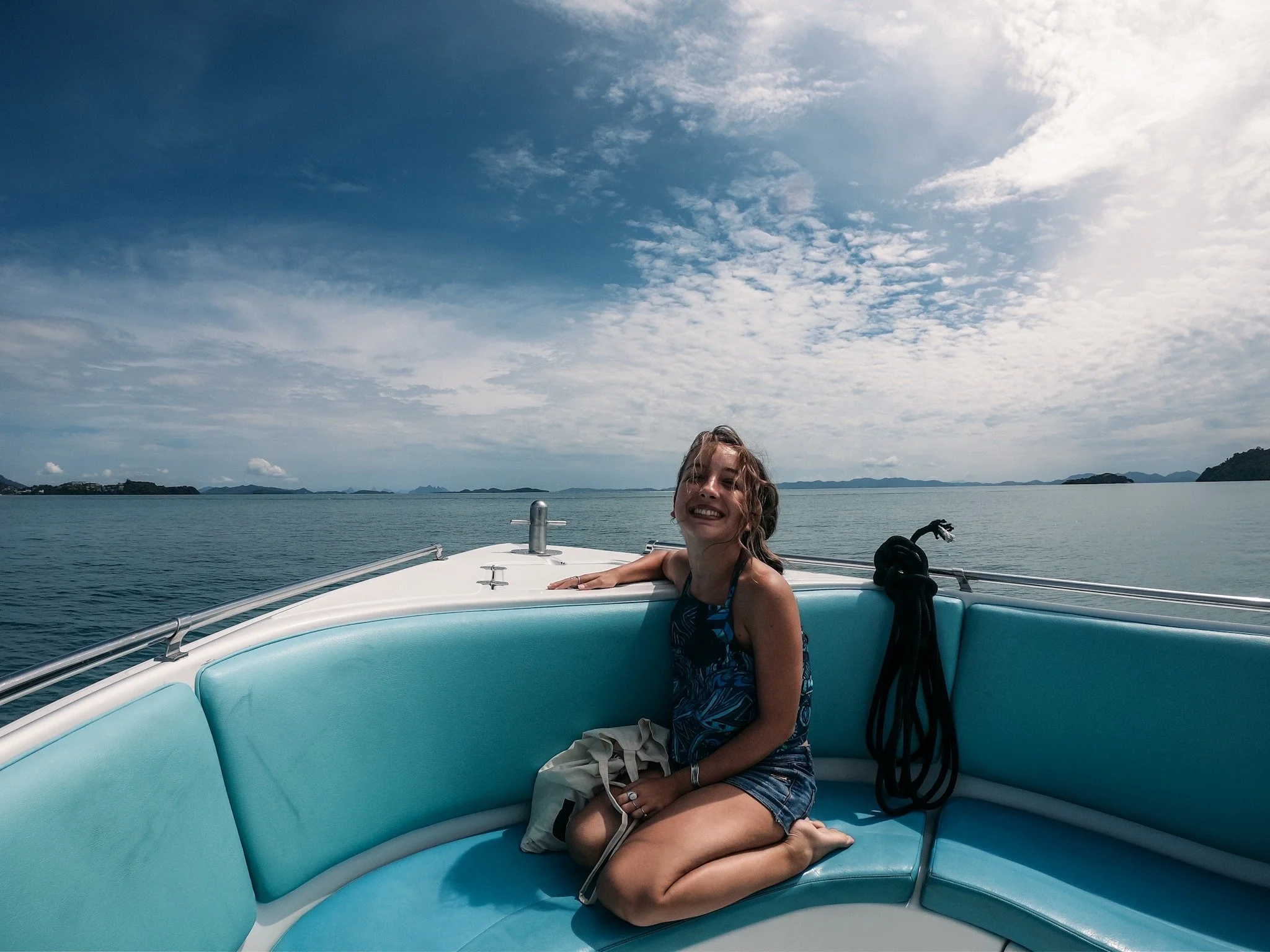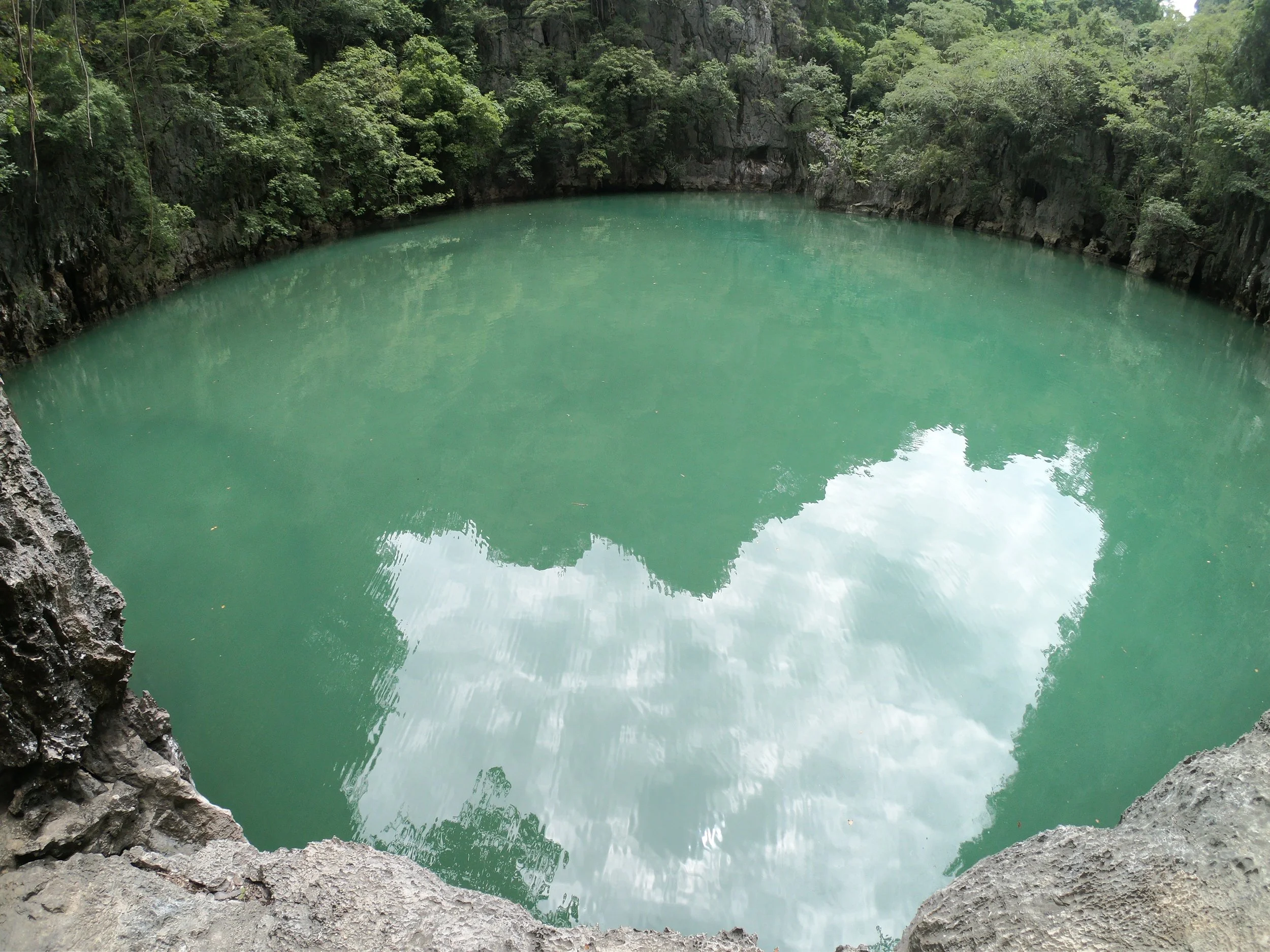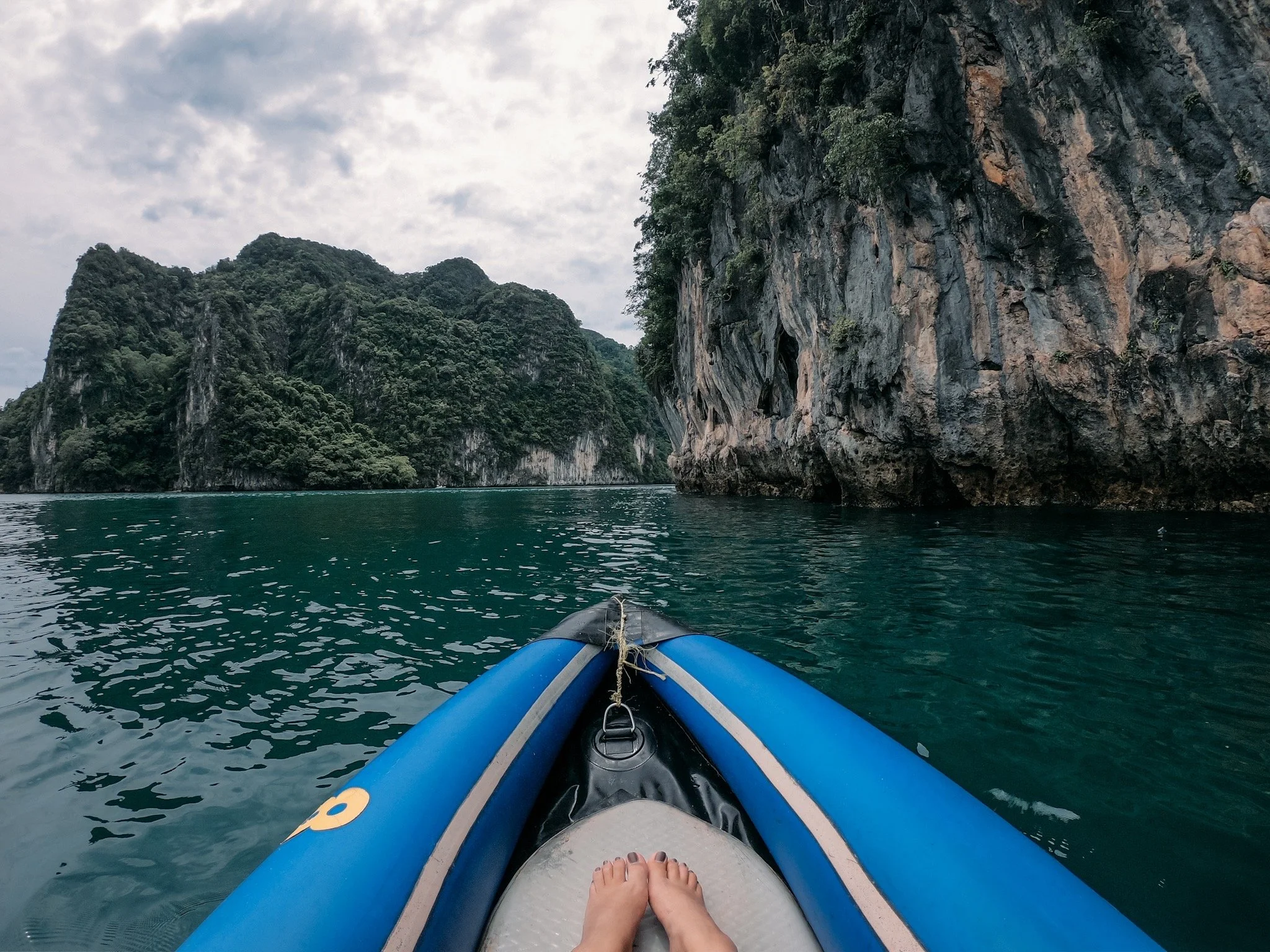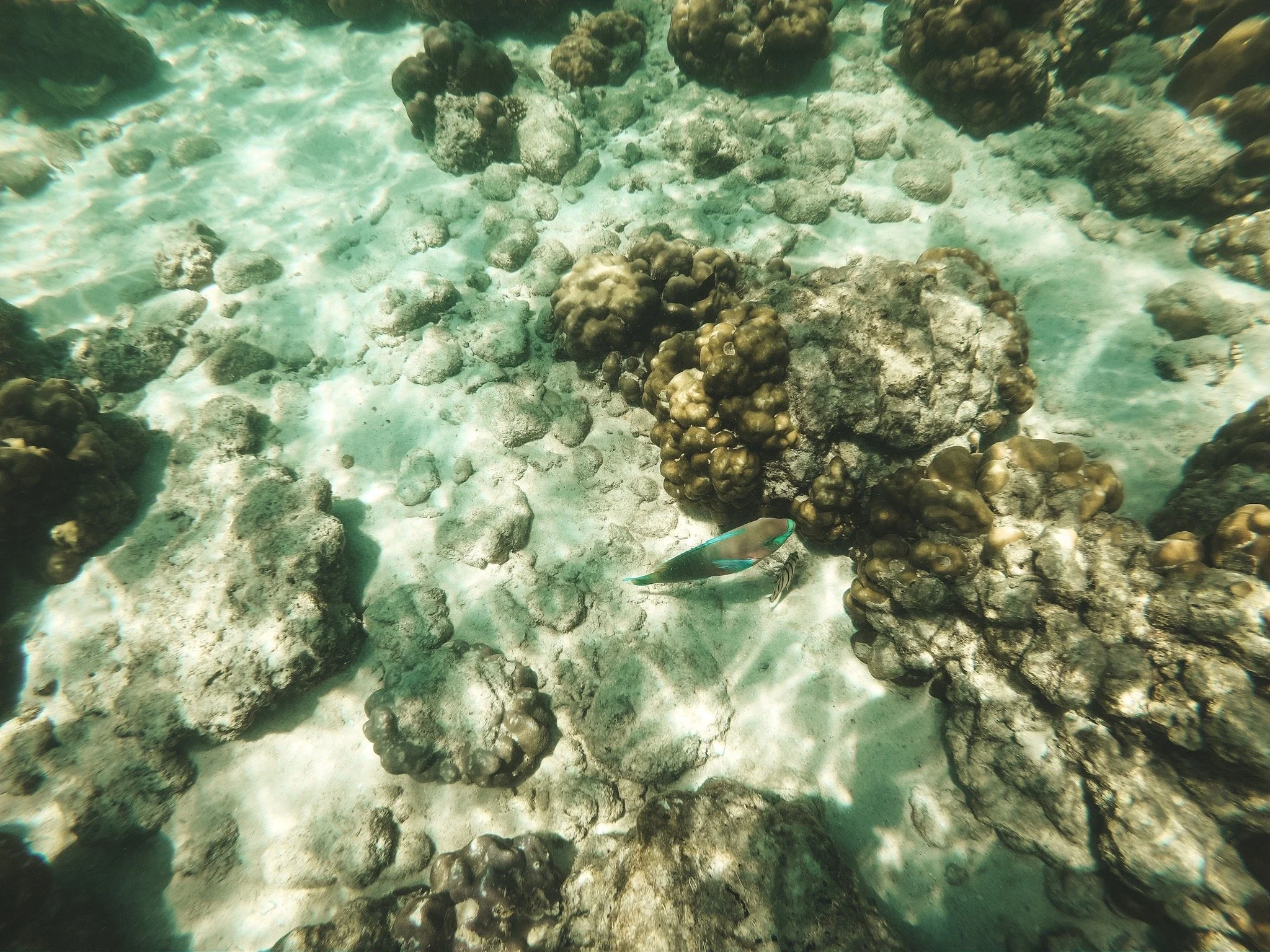Thailand Week Three: Bangkok and Phuket
From calm and peaceful Chiang Mai — we went to crazy Bangkok. Big change. So many people - so much traffic. I must admit I have a love - hate relationship with Bangkok.
We stayed in Ari (also spelt Aree) which is located in the north of Bangkok. My friend booked an Airbnb for us and I didn’t know where it was until I got there. In the beginning, I was a bit disappointed, all the places I had found that seemed interesting and I wanted to visit (museums, shops, restaurants, temples) were far away, and I hadn’t found anything in Ari… However, after two days I started really liking Ari - it’s an up-and-coming neighbourhood with great cafes and restaurants, its quieter than the rest of Bangkok and has great transportation links (Sukhumvit Line of the BTS Skytrain). There aren’t many tourists here, mostly locals and foreigners that live and work in Bangkok.
Some places I suggest checking out if in the Ari area:
La Villa Ari - An open air community mall next to the BTS Ari station. Many cafes, restaurants and independent shops. Lots of people come here to relax and socialise.
Aree Garden - Boutique shops, more cafes and restaurants and an outdoor market as well, they also do workshops and have fun events on the weekends.
NumThong Gallery - Small and cute art gallery, with exhibitions of Thai and sometimes International artists.
Cafes:
Common Room x Ari: Tiny, but nice coffee and breakfast and very friendly staff.
Landhaus Bakery: OH MY GOD. Best pastries, cosy interior, great breakfasts, good wifi and good coffee. We loved this place and can’t recommend it enough.
Porcupine Cafe: Another favourite. Great coffee and snacks, nice interior. Perfect for working or relaxing with a good book.
Puritan: We didn’t go there, but it was recommended to us by some friends that live here. Apparently the desserts are great and the decor is a mix up of different styles and apparently a must see!
Restaurants:
Joha: Amazing Korean food, we went here twice because we couldn’t choose from the menu and wanted to try as much as possible!
Lay Lao: Traditional Thai food, cosy interior.
Salt: One of my favourites! Mix of Japanese and Italian cuisine, great atmosphere both inside and outside. Best cocktails, and really good desserts.
Street Food Soi Ari: Fresh Thai food, very cheap — many people buy their lunch from here and then go back to their office.
I’m not going to lie, I hated Bangkok the first day I was there. I decided to do all the touristy things and go to Wat Phra and the Grand Palace. It took me an hour and a half with a taxi to get there from where we were staying (this was back in my ‘I’m scared to go on a Grab motorbike that a stranger is driving’ days and for some reason I didn’t think of taking the BTS). I arrived and there were SO. MANY. PEOPLE. — tour groups, people shouting and pushing and bumping into you, no sense of personal space — really not what I wanted, and a big shock after being in Chiang Mai for two weeks.
I tried to get in and they stopped me because I was not wearing a t-shirt. I was wearing a tank top and had a shawl around my shoulders - but apparently that’s not good enough. They obviously had a shop that you could buy t-shirts from, and one ‘I love Thailand’ t-shirt was 400baht … When I went to buy a ticket, I asked if I can pay with card, and they told me no because I was only one person. Apparently, if you are with someone then you can pay with card, but not if you are alone... (I didn’t like that - there are so many solo travellers in Thailand and this is one of the most touristy places in Bangkok - I don’t understand why they do this) Staff was really rude and not helpful and I was really annoyed by the time I went inside. Once inside, even though it was beautiful - it was quite overwhelming because of all the people. I really recommend going as early as possible. I didn’t really enjoy my time there because of how packed it was. Here are some photos though - a lot of pattern inspiration and lovely colours.
There is also Queen Sirikit Museum of Textiles in this complex, however photos were not allowed inside. It was interesting to see how the Queen’s style changed. Early on, she only used fabrics and designs made in France. Very chic and European. However, after some time she changed her style. After visiting the North of Thailand, and seeing how women created textiles, their dyeing, the Ikat weaving, the traditional patterns and symbols — she started buying fabrics off them, to help them and to show them how important textile heritage is. The textiles would be sent to France, where famous French fashion designers would create her ensembles using the Thai textiles. The results were actually beautiful, a mix of East and West. It’s worth having a look, if you are already at the Grand Palace.
I spent the next day going to museums and walking around different areas. First, I went to the Bangkok Art and Culture Centre. There are some exhibits outside of the centre, and once inside there are lots of small exhibitions, shops and once again - cafes!
I actually found a shop in the Centre that was full of natural dyed clothes and accessories (unfortunately I didn’t take down the name of the shop, but it was next to a cycling shop). Here are some of the Thai brands that I really liked and found in the shop:
Homrak - Indigo tie-dyed accessories and clothes
Cubism - Naturally dyed linen clothes
For the past three years, at the BACC, there has been a project to develop handicrafts. The project involves educational activities and an exchange of knowledge between the networks of regional craft masters and artists/creators. This year it was based on basketry, and a lot of Thai artists / craftsmen went to Taiwan, Philippines and many places in Thailand, in order to learn and exchange a variety of new basketry skills. After their trip the artists created modern basketry that was displayed at the BACC, at an exhibition called ‘Revival of the Forgotten Heritage’. The items exhibited were created because of this exchange of knowledge and skills - the items were very modern, innovative and beautiful. A modern twist to traditional techniques and practices.
The other exhibition that was on was called ‘Subconscious’. It was an exhibition organised by female artists from three southern border provinces. They collaborated together with the aim of showing the way of life of people in their local area. ‘The exhibition is conducted by using the artist’s subconscious state to simulate imaginative paintings through creative works’. My favourite was Nordiana Beehing’s work. She presented the way of life through spaces and architectural forms using embroidery and different fabrics to do so. Her aim — to record the life story of the local people, but also to show how architecture is changing. As she says ‘In the past, the primary materials for construction used to be wood, but now the development of architectural forms are a mix of eastern and western influences. Thus, the value and importance of traditional architecture has begun to decline.’ I loved the subtle colour palette, the transparencies and layering of the fabrics as well as all the detail and time spent on embroidering.
Another artist that used textiles for this exhibition was Kameelah I-lala. Her work was about marriage, weddings and how women from her province desire and seek ‘the happiness, goodness, and the beauty of marriage life to compliment each other.’ Her work is mixed media, parts of wedding dresses as well as painting and embroidery are combined to create abstract pieces.
Next stop was Jim Thompson’s House & Museum.
Jim Thompson was an American born in 1906. Before WW2 he was an architect, during the war he volunteered for service in the US Army and was sent from Europe to Asia. After leaving the service, he decided to return to Bangkok and live there permanently. The hand-weaving of silk captured Jim Thompson’s attention and he devoted himself to reviving the craft. He contributed substantially to the industry’s growth and to the worldwide recognition of Thai silk. There are now Jim Thompson shops, that stock hand-woven silk products and fabrics, all over the world.
He gained further recognition through the construction of his house, by combining six teak buildings, which represented the best in traditional Thai architecture. Most of the houses were at least two centuries old. They were from the old capital, Ayudhya and were dismantled and rearranged in Bangkok. On the 26th of 1967, he disappeared while on a visit to the Cameron Highlands in Malaysia. It’s still not known what happened to him even though there are a lot of rumours and stories.
When I arrived at the museum, I was told that there is a guided tour (I think there is a tour every 15 minutes). Usually it is a group of 10 people and the tour guide. After giving us a short introduction to him, she also showed us his antique collection and talked to us about the house.
I loved the atmosphere of this house, a combination of eastern aesthetic, with western alterations (mostly to make it more comfortable, or at least comfortable for westerners). I loved the open spaces — it created a sense of freedom. I loved the colours and how most of the outside wooden walls were painted red forming a strong juxtaposition with the tropical green plants which basically formed a jungle around each building. It is clear that Jim Thompson had a good eye and collected beautiful antiquities that all formed a whole. Unfortunately, photos are not allowed inside the different buildings - but you can see textiles, ceramics, furniture and small decorations that all go together perfectly.
There is also a restaurant cafe and a shop. Outside of the shop they have a display of the two cocoons (yellow and white). Cocoons may range from white and yellow to grey. The yellow breed is Thai native silk - it creates a beautiful golden thread with an unique and uneven slob which is what makes Thai silk stand out from the rest. The white cocoon is usually Japanese, Chinese or Indian.
The process of unwinding the silk filaments from the cocoon was also explained. As the filament of the cocoon is too fine for commercial use, three to ten strands are usually reeled together to produce the desired thickness. A special wooden divide is used to locate the end of the filament after which it is carefully unwound, over a boiling pot. The spinners immerse the cocoons in boiling water to help soften the thick gum coating. I saw this process in Cambodia, and I will be sharing photos and videos on my next blog post. There was also a display of dyed silk however, it was all chemically dyed and when I asked they told me they always dye with chemical dyes.
I spent my last day in Bangkok walking around and taking everything in. For me it’s the city of ‘Juxtaposition’ - one corner is full of modern buildings and the other is a huge park, like a jungle — full of tropical trees, plants and flowers. It’s all grey and suddenly there is a graffiti explosion! There are places where there is a mix of cultures, and places like Chinatown or Little India or the Japanese neighbourhood which are full of shops and restaurants only related to that culture. I went to little India, and found many nice fabrics and haberdashery, I went to a market in China Town and got out 10 minutes later because there were so many people I felt like I couldn’t breathe!
I also went to the Thailand Creative and Design Centre which is a really interesting building however, there was no exhibition on so I didn’t stay. But I would like to go back and visit. I obviously had a really long list of places I wanted to go to and I didn’t manage to go everywhere.
Here is a list of places I didn’t have time to visit:
National Museum
Amulet Market
Museum SIam
The Queen’s Gallery
Chutuchak Market (but I ended up going there at the end of my trip - will write about it soon)
Hands and Heart Cafe (recommended by a lot of friends)
Kaizen Coffee ('')
Airplane graveyard - really wanted to go there but it’s out of Bangkok (I think around an hour drive depending on traffic) and we didn’t have time
Bangkok city city gallery
Lumphini Park
Candide Books and Cafe
PHUKET
For the weekend of that week we took a plane to Phuket. We stayed on a tiny island next to Phuket called Coconut Island. I still haven’t decided if that was the right decision or not. Since we were there only for 3 days we didn’t really end up seeing Phuket. The first day after arriving we stayed at the hotel. I went to the village behind the hotel, and swam at the pool and relaxed. The next two days we did two day trips, one to the James Bond island (Phang Nga Bay) and a snorkelling trip to the Phi Phi islands.
The first night at the Coconut Island I saw the most beautiful sunset of my life. Here are some photos from the village on the island and photos from the sunset as well.
The second day, we did a full day tour organised by the hotel. We were on a speedboat with 6 more people. I love being on a boat, it makes me so happy. I love the wind, I love getting splashed with water, I love it when there are waves and for a few seconds the boat is flying. I sat on the front enjoying every moment of it.
First we went to a cave. After some walking and climbing we got to a lagoon, it was really beautiful, the water was so clean and had a beautiful light turquoise colour, which contrasted with the grey rocks and green plants around it. There we stopped, and went for kayaking. I wish we could each have our own kayak and paddle ourselves but unfortunately, there was someone paddling for us. I think it’s because it’s getting too touristy now (and busy) and they want to make sure no one gets hurt or lost. Anyway, with the kayak we went through caves and lagoons and both loved it. Next, we went to the James Bond island and saw the famous ‘rock’ — which is just a rock. To be honest I don’t know why we stopped there for 45 minutes.
Next we went to a floating village called Ko Panyi for lunch. When I got there, I realised my dad had told me about this village years ago. Kids had built a football court by themselves on the sea to play. Because there was no barrier or walls around the football court, every time the ball exited the court, it fell in the sea and someone had to go get it. The kids actually became a really good team and I think one of them became quite famous. Anyway, this was a few years ago and now that footballer helped build a normal court where kids can play. The food we had there was great and then we had free time to walk around and see how these people live. After that we went to a small island called Ko He (Banana beach) we rented a jet-ski and it was great even though it started raining 5 minutes later.
The next day we went to the Phi Phi islands and snorkelled in many different places. I don’t remember the tour company but I found it through GetYourGuide App. They picked us up from the Phuket harbour closest to out hotel, and drove us back, food was included (buffet) as well as fins and masks. First, we stopped close to the beach where the movie ‘The Beach’ was shot. The bay was closed for environment protection. They close it every year for a few months in order to make sure the fauna and flora have time to recover. Unfortunately, tourism is affecting the Maya Bay with a study showing that 80% of the corals have been destroyed.
We stopped the boat close to that island, but further away from Maya Bay for snorkelling. It was quite deep, but you could still see the bottom, corals and lots of fish - so many colours! Then we went to main Phi Phi island for food, and we also swam at the beach there. There were LOTS of tourists. We went at the low season and everything was packed…
After that we went to the Bamboo island. A tiny island with shallow waters and the best snorkelling we’ve done. We were in the water for two hours straight, and loved every moment of it. We saw so many corals, shells, fish and jellyfish. I think we will both always remember this day. And I definitely want to try diving next.
So we didn’t really see anything in Phuket! But here is a list of places I’d heard were good and was planning to go to:
Kathu waterfall
Paradise Beach
Freedom BeachKaron Beach
Kata Beach and View Point
Bang Pae Waterfall
Layan Beach
Even though I didn’t really see any textile techniques this week, it was still fun to go from the North and the mountains of Thailand, to crazy Bangkok and then to the sea. I was sad to leave Thailand. I do think it’s very touristy, however, I really liked the culture, the food, the people, and their beliefs and customs. It is true that they always greet you with a smile! I loved Thailand, I actually ended up going another two times the last month I was in South East Asia (very short trips but still, shows how comfortable I felt there and how much I enjoyed it). There is still so much to see in Thailand, and I definitely would like to visit again for a longer period of time.
Next week the post will be about our week in Cambodia! xxx




